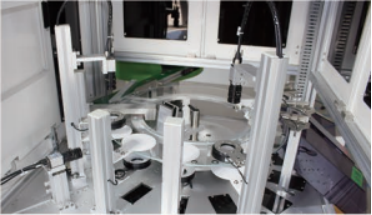Rear Crankshaft Main Bearing Seal Replacement and Maintenance Guide
Understanding Rear Crankshaft Main Bearing Seals
The rear crankshaft main bearing seal plays a crucial role in the overall performance and integrity of an engine. Designed to prevent oil leakage from the rear of the crankshaft, this seal is often overlooked despite its importance in maintaining engine efficiency and longevity. In this article, we will explore the function, types, common problems, and maintenance considerations related to rear crankshaft main bearing seals.
Function of the Rear Crankshaft Main Bearing Seal
The rear crankshaft main bearing seal is located at the rear of the crankshaft, where it connects to the transmission. Its primary function is to seal the engine oil within the crankshaft assembly, preventing leaks that can lead to oil loss. By keeping the oil contained, this seal helps to ensure that the engine remains lubricated, thereby reducing friction between moving parts and preventing excessive wear. Additionally, a properly functioning seal prevents contaminants from entering the engine, which can lead to further damage.
Types of Rear Crankshaft Main Bearing Seals
There are mainly two types of rear crankshaft seals the conventional lip seal and the modern rubber or silicone-based seals.
1. Conventional Lip Seals These seals feature a simple design and are made from rubber or other elastomers. They work by creating a tight seal around the crankshaft, relying on the elasticity of the material. While these seals have been widely used for decades, they can wear out over time and may become less effective, leading to oil leaks.
2. Modern Rubber or Silicone Seals These are designed with enhanced materials that provide better durability and resistance to high temperatures and pressures. Silicone seals, for example, can extend the life of the seal and improve the overall performance of the engine. These modern options are often used in newer engine designs, where improved sealing capabilities are essential.
Common Problems Associated with Rear Crankshaft Main Bearing Seals
Despite their importance, rear crankshaft main bearing seals can develop issues that may affect engine performance. Some common problems include
rear crankshaft main bearing seal

- Oil Leaks The most obvious sign of a failing rear crankshaft seal is oil leaking from the rear of the engine. This can lead to a low oil level, resulting in insufficient lubrication and increased wear on engine components.
- Engine Noise If the seal is compromised, it can allow dirt and debris to enter the engine, leading to increased friction and noise. If you notice unusual sounds coming from the engine, it may be time to inspect the seal.
- Oil Contamination A damaged seal can also lead to contamination of the engine oil with debris from outside the engine. This can degrade the effectiveness of the oil and lead to further engine issues.
Maintenance and Replacement Considerations
Regular maintenance is essential to prolonging the life of your rear crankshaft main bearing seal. Here are a few tips
1. Regular Inspections During routine maintenance, mechanics should inspect for signs of oil leaks or wear around the rear crankshaft area.
2. Quality Replacement Parts If a replacement is needed, it’s important to use high-quality seals that are compatible with your engine to ensure proper function and longevity.
3. Professional Installation Because access to the rear crankshaft is often complex, having a professional mechanic perform the installation can help avoid any issues that might arise from improper fitting.
In conclusion, the rear crankshaft main bearing seal is an essential component in maintaining engine performance and preventing oil leaks. Understanding its function, types, potential problems, and maintenance tips can help vehicle owners ensure their engines run smoothly for years to come. Regular attention to this often-overlooked seal can save time, money, and headaches down the road.
-
Understanding the Front Main Engine Seal: Purpose, Maintenance, and Installation
News Jul.29,2025
-
Understanding O-Rings and Seal Rings: Types, Applications, and Custom Solutions
News Jul.29,2025
-
Understanding Crankshaft Oil Seals: Rear Seals, Pulley Seals, and Their Role in Engine Integrity
News Jul.29,2025
-
The Importance of Front and Rear Crankshaft Seals in Engine Performance and Oil Management
News Jul.29,2025
-
Crank Oil Seals: Functions, Types, and Cost Considerations in Engine Maintenance
News Jul.29,2025
-
A Comprehensive Guide to O-Rings and Seals: Types, Materials, and Global Applications
News Jul.29,2025
-
Mastering Diesel and Performance Engine Maintenance: A Guide to Critical Oil Gaskets
News Jul.28,2025
Products categories















